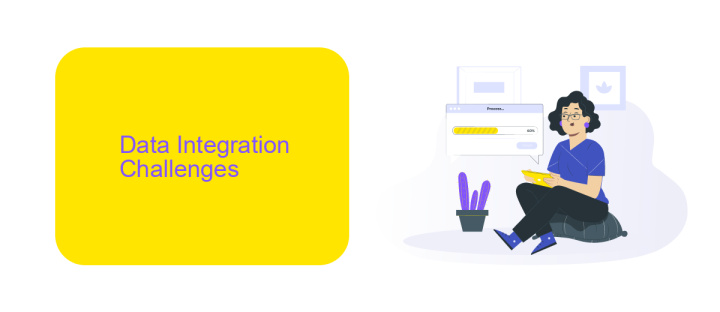Guide to Data Integration
Data integration is a critical process for organizations aiming to harness the full potential of their data. By seamlessly combining data from various sources, businesses can gain holistic insights, enhance decision-making, and streamline operations. This guide will explore the fundamentals of data integration, its benefits, and best practices to help you navigate and implement effective data integration strategies.
Introduction
Data integration is a critical process for businesses aiming to harness the full potential of their data. It involves combining data from different sources to provide a unified view, which can significantly improve decision-making and operational efficiency. Whether you are dealing with internal databases, cloud services, or third-party applications, effective data integration ensures that all your data is accessible and usable.
- Centralized data management
- Improved data quality
- Enhanced business intelligence
- Streamlined operations
One of the tools that can simplify the data integration process is ApiX-Drive. This service allows seamless integration between various applications and systems, automating data transfer and synchronization. By utilizing ApiX-Drive, businesses can save time, reduce errors, and ensure that their data is always up-to-date and consistent across all platforms.
Data Integration Challenges

Data integration presents several challenges that organizations must navigate to ensure seamless data flow. One of the primary issues is data inconsistency, where data from different sources may not align due to variations in formats, structures, or definitions. This can lead to inaccurate analytics and decision-making. Additionally, data quality is a significant concern; integrating data from multiple sources often results in duplicate, incomplete, or outdated information, which can compromise the integrity of the integrated dataset.
Another challenge is the complexity of integrating disparate systems, each with its own protocols and standards. This often requires specialized tools and expertise to bridge the gaps between systems. For instance, services like ApiX-Drive can simplify this process by offering automated data integration solutions that connect various platforms and applications effortlessly. Security and compliance also pose significant hurdles, as organizations must ensure that data integration processes adhere to regulatory standards and protect sensitive information from breaches and unauthorized access.
Data Integration Tools and Technologies

Data integration tools and technologies are essential for combining data from different sources into a unified view. These tools help streamline the process, ensuring data consistency, quality, and accessibility. They vary in functionality, from simple data migration to complex data transformation and synchronization.
- ETL Tools: Extract, Transform, Load tools like Apache Nifi and Talend are used to extract data from various sources, transform it into a suitable format, and load it into a target system.
- Data Integration Platforms: Platforms such as ApiX-Drive offer a comprehensive suite for setting up and managing integrations between diverse applications and databases, enabling seamless data flow.
- Data Virtualization Tools: Tools like Denodo provide a virtual layer to access data in real-time without the need for physical data movement, enhancing data accessibility and performance.
Choosing the right data integration tool depends on your specific needs and the complexity of your data environment. While ETL tools are great for batch processing, platforms like ApiX-Drive excel in real-time data integration, making them suitable for dynamic and fast-paced business environments.
Data Integration Best Practices

Effective data integration is crucial for businesses aiming to leverage their data for better decision-making and operational efficiency. To ensure a seamless integration process, it is essential to follow best practices that can help mitigate risks and maximize the benefits.
First, clearly define your data integration goals and requirements. This will guide the selection of tools and the design of the integration architecture. Next, prioritize data quality by implementing validation and cleansing processes to ensure the accuracy and consistency of the integrated data.
- Choose the right integration tools: Platforms like ApiX-Drive can simplify the integration process by providing user-friendly interfaces and pre-built connectors.
- Ensure data security: Implement robust security measures to protect sensitive data during the integration process.
- Monitor and maintain: Regularly monitor the integration processes and perform maintenance to address any issues promptly.
- Scalability: Design your integration architecture to accommodate future growth and additional data sources.
By adhering to these best practices, businesses can achieve efficient and reliable data integration, enabling them to harness the full potential of their data. Utilizing tools like ApiX-Drive can further streamline the process, making it easier to connect various data sources and automate workflows.
- Automate the work of an online store or landing
- Empower through integration
- Don't spend money on programmers and integrators
- Save time by automating routine tasks
Conclusion
In conclusion, data integration is a critical process for modern businesses aiming to leverage their data effectively. By seamlessly connecting disparate data sources, organizations can achieve a unified view of their operations, leading to more informed decision-making and improved business outcomes. The right tools and strategies are essential for successful data integration, ensuring that data is accurate, up-to-date, and accessible across various platforms.
Services like ApiX-Drive play a pivotal role in simplifying the data integration process. ApiX-Drive offers robust solutions for connecting different applications and automating data flows, reducing the need for manual intervention and minimizing errors. By utilizing such services, businesses can streamline their operations, save time, and focus on deriving value from their integrated data. Embracing data integration not only enhances operational efficiency but also provides a competitive edge in today's data-driven landscape.
FAQ
What is Data Integration?
Why is Data Integration important for businesses?
What are some common challenges in Data Integration?
How can businesses automate Data Integration processes?
What should be considered when choosing a Data Integration tool?
Strive to take your business to the next level, achieve your goals faster and more efficiently? Apix-Drive is your reliable assistant for these tasks. An online service and application connector will help you automate key business processes and get rid of the routine. You and your employees will free up time for important core tasks. Try Apix-Drive features for free to see the effectiveness of the online connector for yourself.


